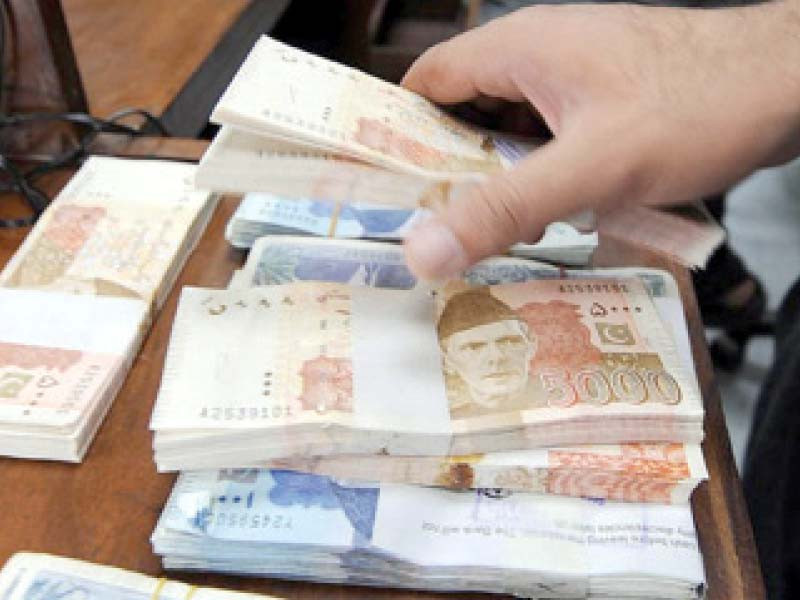
Pakistani currency remained highly volatile, as it plunged to a record low at Rs209.96 against the US dollar in the inter-bank market on Monday on conflicting reports that commercial banks were running short of foreign currency to pay for imports.
The rupee dropped 0.58% (or Rs1.21) to Rs209.96 compared to Friday’s close at Rs208.75, according to the central bank.
The rupee hit an intra-day all-time low at Rs211.21 in the early hours of the day but partly recovered before the market’s closure.
With the record-breaking downward spree, the local currency has cumulatively lost 33.27% (or Rs52.42) of its value in the past one year compared to Rs157.54 on June 30, 2021.
Amid the free fall in the rupee, Finance Minister Miftah Ismail assured the nation after the closure of inter-bank market in the evening that the IMF loan programme would be resumed “in a day or two.”
Besides, the State Bank of Pakistan (SBP) has reportedly tightened rules to cut demand for foreign currency for imports and considering relaxing rules to increase dollar supply in the inter-bank market.
“The rupee has nosedived on panic buying of dollars by importers … amid prolonged delay in the resumption of IMF loan programme and continuous depletion in foreign exchange reserves,” Alpha Beta Core (ABC) CEO Khurram Schehzad said while talking to The Express Tribune.
The country’s foreign exchange reserves (maintained with the SBP) have depleted to a critically low level below $9 billion, covering less than six weeks of imports.
Moreover, the US dollar has continued to strengthen against world currencies including the Pakistani rupee since the Federal Reserve increased the interest rate by 75 basis points around a week ago, he said.
Schehzad said the revival of IMF loan programme would help the rupee to recover significantly, but it remained almost impossible to anticipate the rupee value in case of further delay in the revival of the programme.
There is a crisis of confidence in the inter-bank market. The government has been making all possible efforts to get the IMF programme resumed. However, importers express doubt whether the government will succeed in reviving the loan programme.
That’s why there is talk of likely default by Pakistan on international payments including import payments and foreign debt repayments.
The central bank has issued new directives to commercial banks, asking them to seek its permission in advance before processing documents for imports worth $100,000 or more.
Earlier, the limit for seeking central bank’s permission for opening of letter of credit (LC) for import was set at $500,000.
Market talk suggests the central bank is also considering relaxing rules for the cash reserve requirement (CRR) against the dollar deposits at commercial banks for a brief period of time.
The measure would increase the supply of dollars in the inter-bank market and support the rupee in resisting a further decline or partly recovering against the greenback, he said.
CRR is like the central bank collecting a portion of cash deposits from commercial banks to protect the depositors.
Besides, the central bank may also increase the CRR against deposits in rupees to reduce the circulation of local currency in the economy. “The measure, if taken, would also support rupee against the US dollar,” he anticipated.
He said the central bank may also consider increasing its key policy rate to protect the rupee at an emergency meeting, which is otherwise scheduled for July 7.
Earlier, Finance Minister Miftah Ismail also sought US help to get the IMF programme revived after the lending institution remained strict with its conditions.
Reports suggest the US has agreed to play its role in getting the programme resumed.
Businessmen have urged the State Bank of Pakistan (SBP) to play its due role in controlling the free fall of the rupee.
The central bank was, however, seemed helpless to control the situation as it cannot supply dollars in the market to support the rupee after the country’s reserves depleted by over $7 billion in the past six months to the current level below $9 billion.
Published in The Express Tribune, June 21st, 2022.
Like Business on Facebook, follow @TribuneBiz on Twitter to stay informed and join in the conversation.




1731975305-0/Untitled-design-(40)1731975305-0-165x106.webp)
1731975060-0/Untitled-design-(39)1731975060-0-165x106.webp)


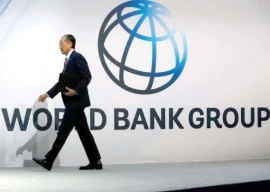

1730379446-0/WhatsApp-Image-2024-10-31-at-17-56-13-(1)1730379446-0-270x192.webp)

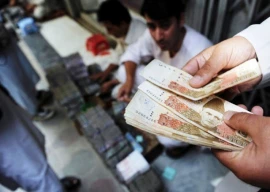
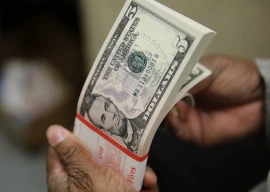
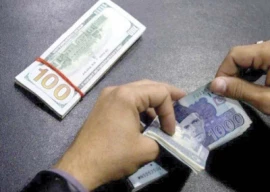







COMMENTS (2)
Comments are moderated and generally will be posted if they are on-topic and not abusive.
For more information, please see our Comments FAQ